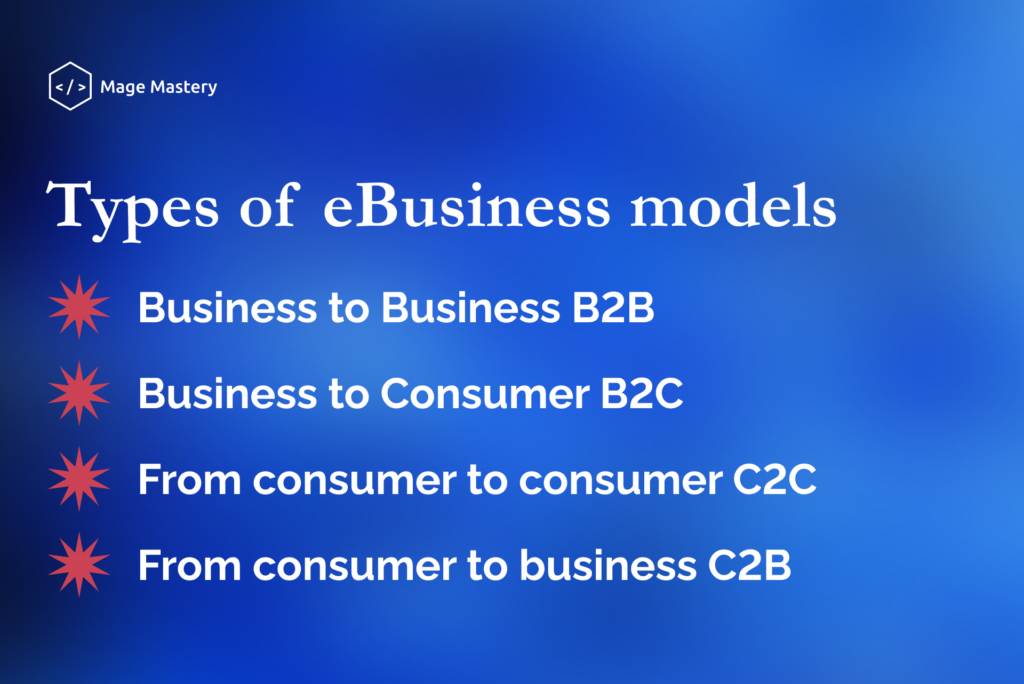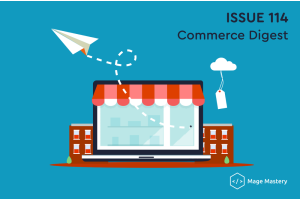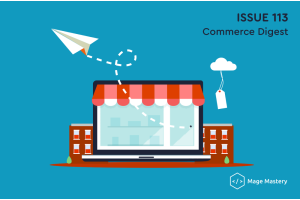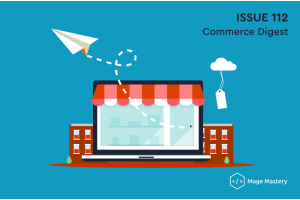The difference between eCommerce and eBusiness
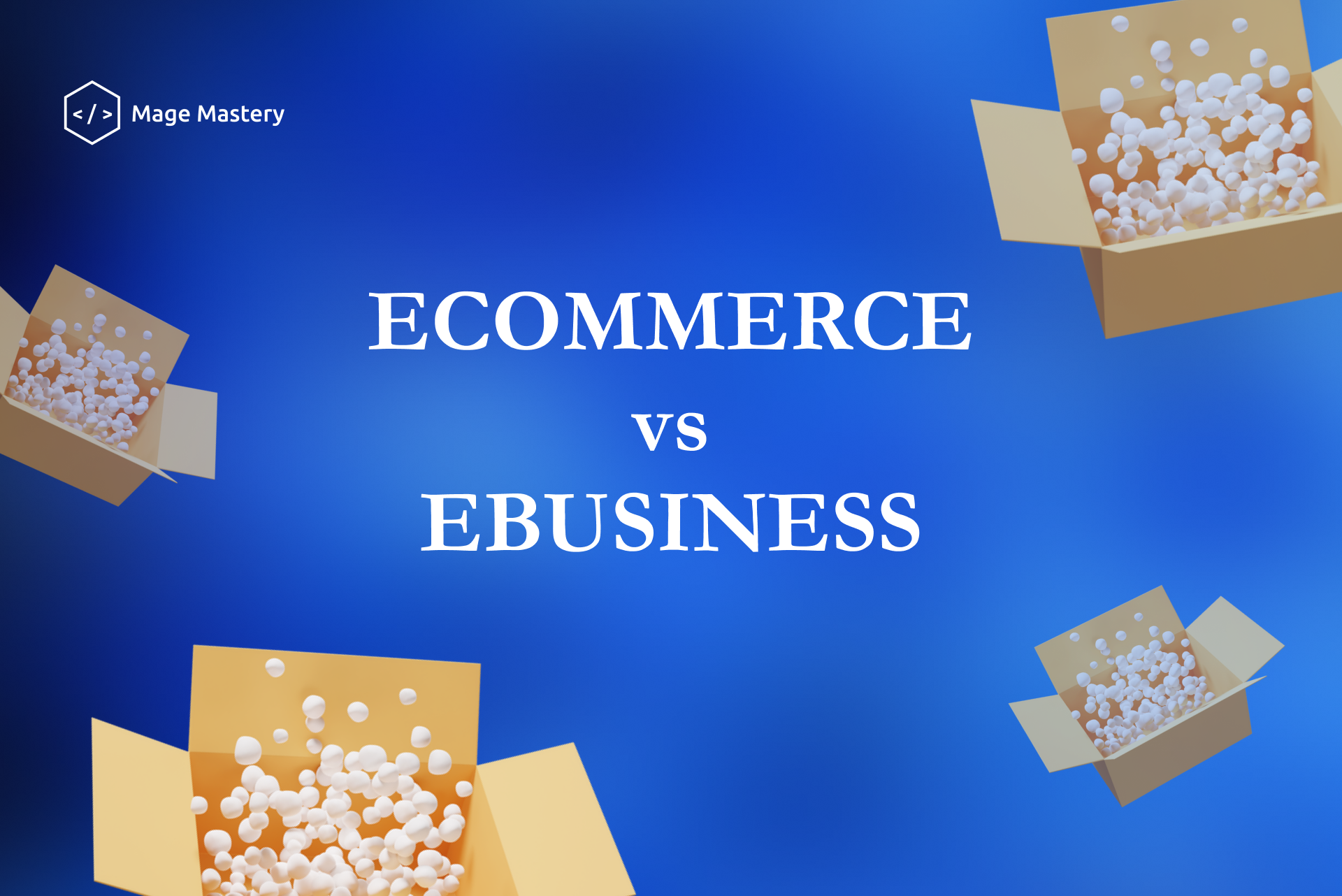
There has long been a widespread trend in the world for businesses to go online, in recent years even more pushed by the pandemic and the global changes associated with it. Digitalization has become a simple and familiar concept for many, but it still raises certain questions. There are different types and models of business, which also determine their characteristics online, and therefore are also defined in different ways. In this article, we clarify the difference between eBusiness and eCommerce.
eCommerce
Electronic commerce, or eCommerce, is a way of doing business, the main distinguishing feature of which is selling and buying over the Internet. This approach allows for commodity-money exchange without direct contact between the seller and the buyer.
So, an example of eCommerce could be an online store, a digital marketplace, or an online ticket booking service.
At the same time, the only necessary condition for the definition of eCommerce is only the completion of a full cycle of purchase and sale via the Internet, but not even the presence of a website. In the modern world, sales are made through a variety of tools: a website, trading platforms, social networks, and so on.
This approach to trading significantly expands the boundaries of this type of business: it increases productivity, opens up new opportunities, increases profits, and allows you to enter new markets.
eBusiness
eBusiness is a way of doing business using the capabilities of the global Internet. This is a rather broad concept, which includes many subspecies and divisions, including eCommerce.
For eBusiness there is no need for online sales, it can only present goods, or vice versa, and continue to interact with customers after the transaction.
Since business areas are as diverse as possible, and each of them can be represented on the network, there will also be an innumerable number of examples of eBusiness, among them: doctor appointment services, online catalogs, FinTech, InsurTech, MedTech solutions, as well as many business management tools, not directly related to the interaction with the buyer.
The main feature of eBusiness is the total digitalization of all processes, not only trade, leading to increased efficiency, profits, and business opportunities.
Key Differences Between eCommerce and eBusiness
We have already figured out that these two concepts are not identical, and they should be considered separately. We also found out that eCommerce is a subset of eBusiness but has its own characteristics. Let's look at the main eBusiness models and see how they apply to eCommerce.
When we talk about business, both online and offline, it is worth understanding that the main and key division occurs based on the classification of the parties to the interaction. Basically, there are two actors: the business and the consumer. But they can interact with each other in various combinations, thus determining the types of electronic business.
Business to Business B2B
B2B or Business-to-Business model assumes the presence of two companies of any size, leading to a mutually beneficial interaction. This may be the exchange of services, or goods, the purchase of services or goods, a partnership, or another type of interaction. The key criterion is, of course, interaction via the Internet.
For example, there are sites where you can submit a tender, find partners, contractors, and so on. Also, the entire sales chain, except for its last link, is conducted according to the B2B model. Another example of such interaction is the development of websites and applications, where both parties - both the developer company and the customer company - are representatives of businesses of any scale.
Business to Consumer B2C
B2C or Business-to-Consumer model is the way companies and businesses interact with consumers as individuals. Simply put, this is exactly the retail interaction that is the last link in the supply chain or exists on its own. This model is the most common and most understandable for modern users.
Examples include any online store, retail catalog site, the same aforementioned ticket booking service, or even an online taxi ordering service.
You can be interested in: 3 inspiring entrepreneur stories: how their ideas became online stores
From consumer to consumer C2C
C2C or Consumer-to-Consumer is a model in which individuals interact with each other. Typically, such interaction takes place on special platforms or social networks, where people can buy and sell used goods, handicrafts, or their services, while not defining it as any form of business.
From consumer to business C2B
C2B or Consumer-to-Business is not the most popular business model, but it exists nonetheless. It is a form of interaction in which users provide certain services or products to businesses. Such interaction can be carried out both through C2C platforms and on special platforms created by businesses to receive services and interact with users.
As you can see, all eBusiness models also apply to eCommerce, which is part of it. So, in each of the types, we observed examples from eCommerce, and this is a completely natural phenomenon.
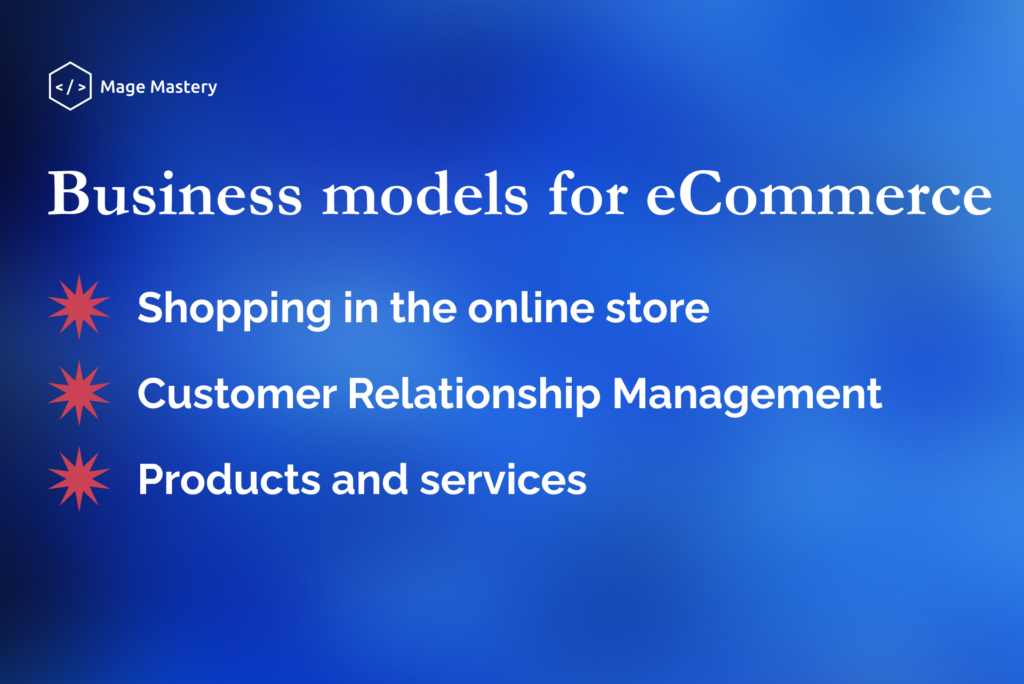
If we are talking about eCommerce, we could single out eCommerce models that are fully correlated with eBusiness models. But, since this concept is already clear to you, let's focus on the features of eCommerce that are specific to this type of business.
Shopping in the online store
Of course, the first and main component of eCommerce is an online store. As we already mentioned, it can be designed in various ways: created as a separate site, hosted on an aggregator site, designed as a profile on a social network, or even a chatbot in a messenger. The main thing is that the user can perform all the actions necessary for the purchase: familiarization with the assortment, selection of goods and services, ordering goods and services, making a purchase, paying, arranging the delivery, or other conditions for receiving a product or service.
An online store is a factor without which an eCommerce company simply cannot exist because its essence is sales via the Internet.
At the same time, it is important to create the most pleasant and useful user experience, so that both parties get their benefit, but at the same time provide a high-quality user experience, which is necessary for retaining customers, attracting new ones, and increasing sales in general.
Customer Relationship Management
Speaking about user experience (UX or User Experience), it is important to note that this concept concerns not only the appearance of an online store and the convenience of interacting with it, which you need to work on. But UX is also a service that you provide to your customers outside the online store: the speed of delivery, the convenience of pickup points, the quality of the goods and services themselves, additional related services, bonuses and promotions, and so on.
A precious tool for achieving high performance is the individual approach that is possible thanks to modern technology. And besides artificial intelligence, machine learning, and other advanced technologies, there are solutions to start with.
A customer relationship management system will allow you to collect and process the data you need to provide the best experience for your users. This solution allows you to track each iteration and makes your work with clients as productive and efficient as possible. At the same time, the creation and implementation of a CRM system are much simpler and cheaper than advanced technologies, but at the same time, it brings unsurpassed results and changes for the better.
You can be interested in 7 tips to optimize user flow on a website
Products and services
Products and services are key in eCommerce because they are the ones that need to be sold in this type of business. So, it is important to ensure high-quality products so that users get the most positive experience from interacting with you and come back again, as well as recommend you further and bring new customers.
It is also important to provide a variety of assortment, because the greater the choice, the more likely that your visitors will find exactly what they need for themselves and still make a purchase.
Last but not least, regarding your range of products, is a well-thought-out chain of sales of related products. Often people don't buy them simply because they don't know they exist or can't find them. This can be avoided by developing a thorough recommendation system for users when making purchases. This will help bring even more value to your customers, improve their user experience, and for business - increase the number of sales and the average bill, which will certainly contribute to the growth of both profits and the company itself.
Conclusions
Despite the fact that many equate eBusiness and eCommerce, they are two completely different concepts. At the same time, eCommerce is only a part, a subspecies of eBusiness. It is important to understand this when building your business strategy and developing digital tools and advertising campaigns.

